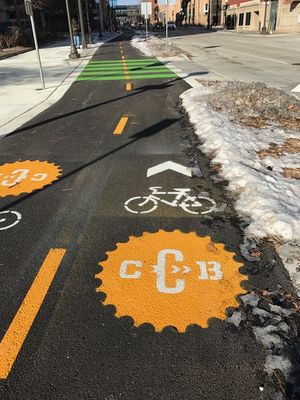
Difference between revisions of "Category:Level 3 - General information, reference, tables, images, and archives/Tables/Permeable pavement"
m |
m |
||
| Line 1: | Line 1: | ||
| − | This page (Category) | + | [[File:picture of porous concrete 1.jpg|thumb|300px|alt=photo illustrating an example of pervious concrete|<font size=3>An example of pervious concrete.</font size>]] |
| + | [[File:Perm asphalt bikeway.JPG|thumb|300px|alt=permeable asphalt photo|<font size=3>Permeable asphalt bikeway in Germany.</font size>]] | ||
| + | |||
| + | Permeable pavements allow stormwater runoff to filter through surface voids into an underlying stone reservoir for temporary storage and/or infiltration. The most commonly used permeable pavement surfaces are pervious concrete, porous asphalt, and permeable interlocking concrete pavers (PICP). Permeable pavements have been used for areas with light traffic at commercial and residential sites to replace traditional impervious surfaces in low-speed roads, alleys, parking lots, driveways, sidewalks, plazas, and patios. While permeable pavements can withstand truck loads, permeable pavement has not been proven in areas exposed to high repetitions of trucks or in high speed areas because its’ structural performance and surface stability have not yet been consistently demonstrated in such applications. | ||
| + | |||
| + | This page (Category) provides links to table that provide information on permeable pavement. | ||
[[Category:Level 2 - General information, reference, tables, images, and archives/Tables]] | [[Category:Level 2 - General information, reference, tables, images, and archives/Tables]] | ||
Latest revision as of 19:03, 11 August 2022
Permeable pavements allow stormwater runoff to filter through surface voids into an underlying stone reservoir for temporary storage and/or infiltration. The most commonly used permeable pavement surfaces are pervious concrete, porous asphalt, and permeable interlocking concrete pavers (PICP). Permeable pavements have been used for areas with light traffic at commercial and residential sites to replace traditional impervious surfaces in low-speed roads, alleys, parking lots, driveways, sidewalks, plazas, and patios. While permeable pavements can withstand truck loads, permeable pavement has not been proven in areas exposed to high repetitions of trucks or in high speed areas because its’ structural performance and surface stability have not yet been consistently demonstrated in such applications.
This page (Category) provides links to table that provide information on permeable pavement.
Pages in category "Level 3 - General information, reference, tables, images, and archives/Tables/Permeable pavement"
The following 5 pages are in this category, out of 5 total.
This page was last edited on 11 August 2022, at 19:03.

